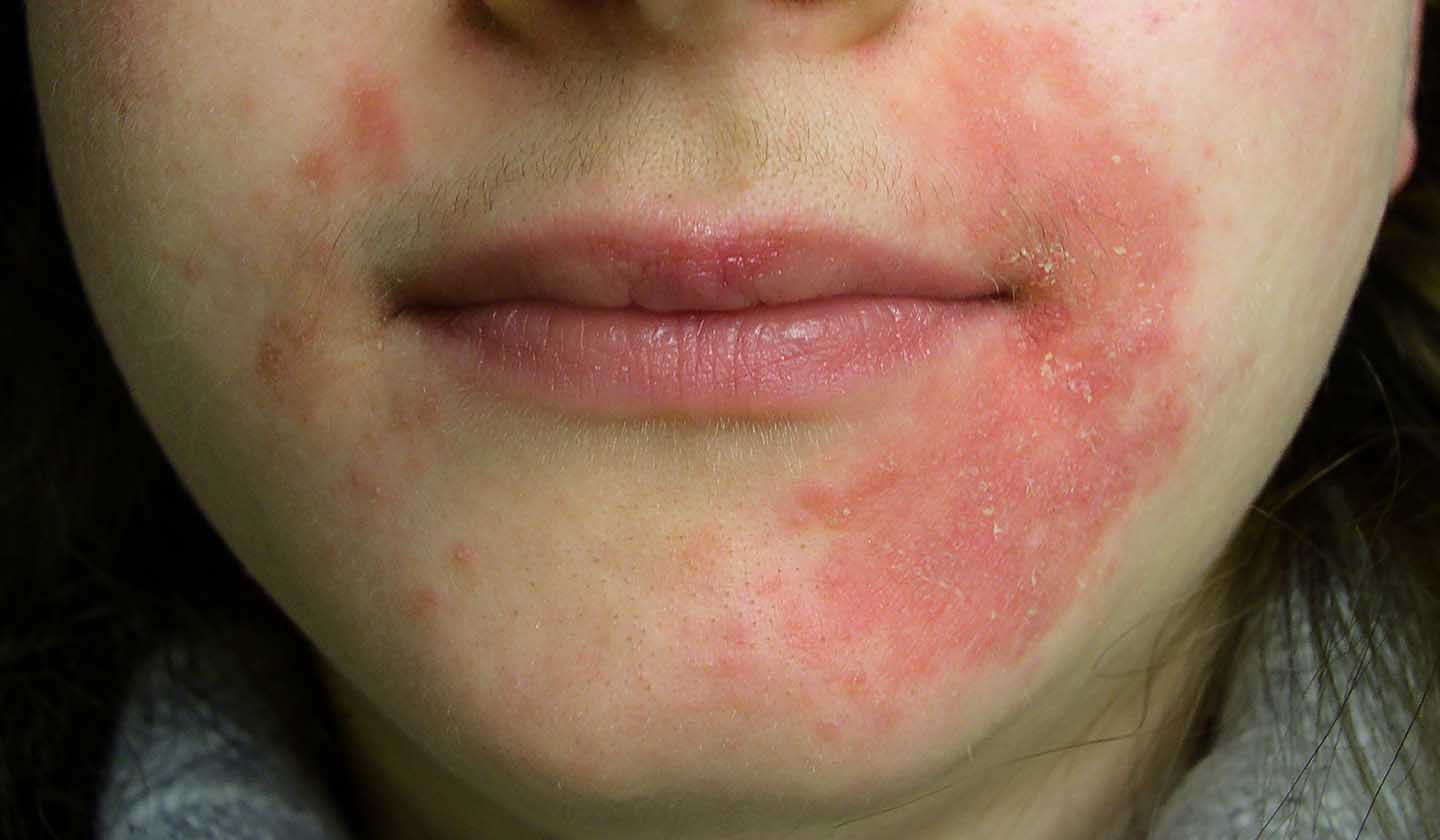Dermatology
Perioral dermatitis - Around the mouth

It is a facial rash, typically located around the mouth, but it can also appear around the nose and, in some cases, around the eyes (periocular dermatitis).
It appears mainly in women of reproductive age (15-45 years) and is less common in men. It can also occur in children of any age (most frequent between 3 months and 13 years of age).
This skin problem usually responds well to treatment, but there are cases in which perioral dermatitis can become chronic and recurrent.

What are the symptoms?
It is characterized by the presence of erythema (redness) and bumps or pustules similar to acne and / or rosacea. There may also be skin dryness and flaking. Usually, the skin around the lips is not affected.
Itching and a burning sensation on the skin can also set on as symptoms of this skin problem.
Causes
The causes are not fully known, but it is thought to be related to a dysfunction of the epidermal barrier, alteration of the skin flora and the skin immune system.
The use of creams with corticosteroids, namely fluorinated (betamethasone, clobetasol, dexamethasone, fluocinolone, triamcinolone) on the face, as well as inhalers and nasal sprays containing corticosteroids can also contribute to the development of perioral dermatitis. The mechanism by which corticosteroids increase patients' predisposition to the development of perioral dermatitis is not well understood. However, it is thought that it may be related to changes in the flora of the hair follicle.
It has also been suggested that atopy may also be a possible contributing factor to the genesis of perioral dermatitis.
Other factors that may trigger perioral dermatitis:
- Fluoride toothpaste;
- Some face creams (too rich, which can have an occlusive effect);
- Excessive use of make-up;
- Some contraceptive pills;
- Sunscreens with an occlusive effect;
- Hormonal changes;
- Excessive sun exposure;
- Saliva (excessive salivation causing the baby / child to drool constantly, for example) - some authors consider that, in this case, this is a contact dermatitis and not a perioral dermatitis).
Diagnosis and treatment
The diagnosis must be made by a dermatologist who will be able to distinguish perioral dermatitis from other skin problems such as rosacea, acne or contact or seborrheic dermatitis.
Treatment involves suspending topical corticosteroids (it may be necessary to wean first) and fluoride toothpastes.
The doctor may prescribe topical antibiotics, such as erythromycin, clindamycin, metronidazole, or oral antibiotics such as doxycycline, minocycline (mandatory medical prescription) or topical immunomodulators such as pimecrolimus and tacrolimus (also under medical prescription). Some medication used to treat acne may also be indicated for perioral dermatitis, such as adalapene or azelaic acid and, in more severe cases, isotretinoin. In children, treatment with erythromycin is preferred.
Recommendations
- Use mild cleansing products - they should have a neutral or slightly acidic pH (skin pH) that does not alter the lipid membrane of the skin barrier or the normal flora (cleansing lotions, micellar waters);
- Soothe the face with thermal water after cleaning;
- Use moisturisers to restore the skin barrier and that have soothing properties, without perfumes or alcohol (ask your doctor or pharmacist for advice);
- Use a suitable sunscreen (ask your doctor or pharmacist for advice);
- Avoid or reduce the use of makeup;
- Avoid salty or spicy foods (as they can irritate the skin around the lips);
- Avoid the use of corticosteroids on the face, except under medical advice.
In the case of babies or children, there are also products on the market specially formulated to soothe the skin with perioral dermatitis (micellar waters and repairing and soothing creams). Talk to your pharmacist.
Perioral dermatitis is often mistaken for acne or rosacea and other skin conditions, such as atopic dermatitis, seborrheic dermatitis, and contact dermatitis. Therefore, it is important to have a diagnosis made by a dermatologist who will decide on the most appropriate treatment.
Sources
iSaúde
Farmácia Distribuição Magazine
Também lhe poderá interessar
Dermatology
Rosacea - Control redness of the skin
Dermatology






